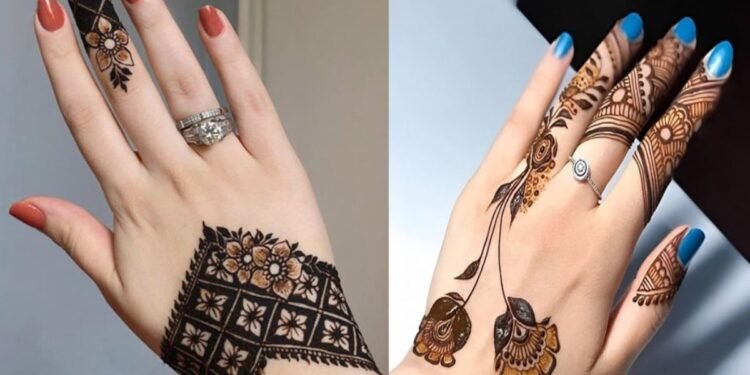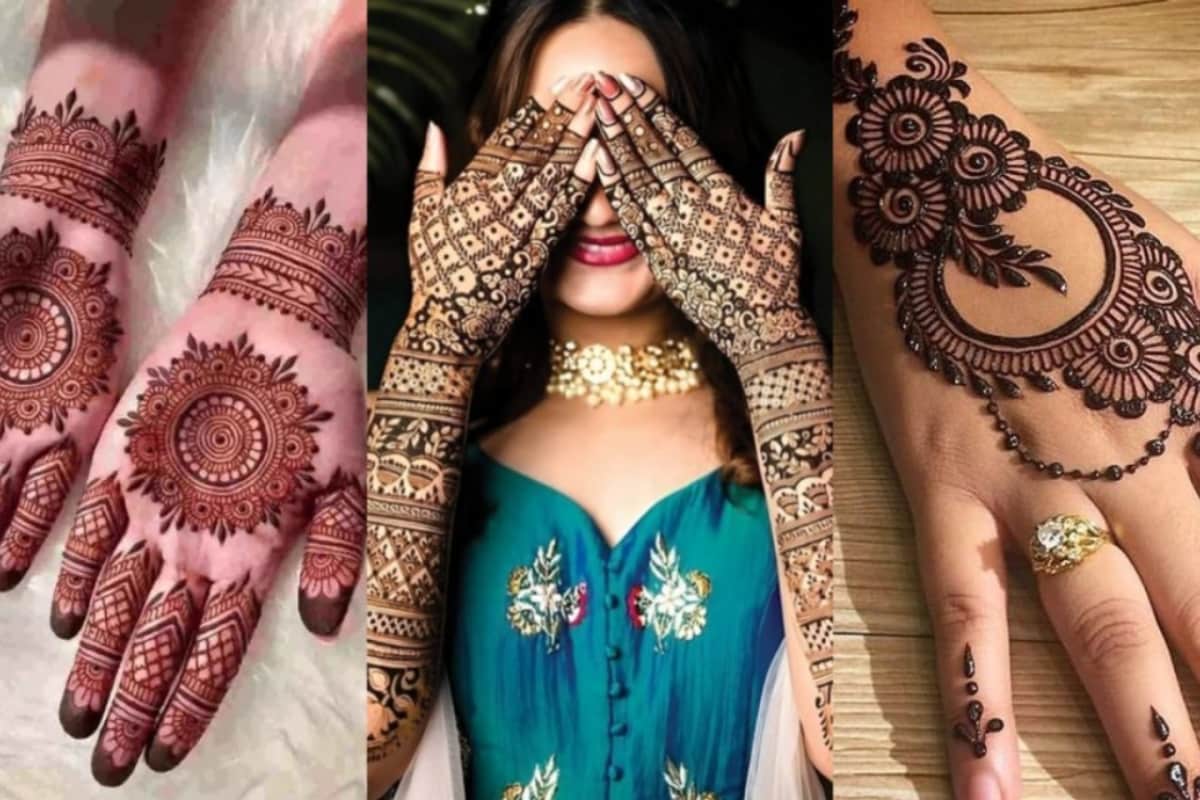Simple Mehndi Designs: A Beginner’s Guide to Traditional Art
As a digital content creator who started my journey documenting traditional arts, I remember my first encounter with mehndi. Sitting cross-legged in my grandmother’s courtyard, watching her skilled hands create intricate patterns with seemingly effortless strokes, I was mesmerized. Today, I’m excited to share my knowledge about simple mehndi designs, perfect for beginners and those seeking elegant yet uncomplicated patterns.
Understanding Mehndi: More Than Just Body Art
Before we dive into specific designs, let’s understand what makes mehndi special. Also known as henna, mehndi is a natural dye derived from the Lawsonia inermis plant. This ancient art form has been practiced for centuries across South Asia, the Middle East, and North Africa, not just for its beauty but also for its cooling properties and cultural significance.
Why Simple Mehndi Designs Are Trending
In today’s fast-paced world, simple mehndi designs have gained immense popularity for several reasons:
- Quick application time (15-30 minutes)
- Easy to master for beginners
- Versatile enough for both casual and formal occasions
- Perfect for busy professionals and students
- Lower risk of smudging or mistakes
Essential Tools and Preparation
Before starting your mehndi journey, ensure you have:
Quality Mehndi Cone
- Fresh mehndi paste
- Properly sealed cone
- Right consistency (neither too thick nor too runny)
Preparation Materials
- Clean, dry hands
- Cotton balls
- Eucalyptus oil
- Lemon-sugar solution
Comfort Items
- Good lighting
- Comfortable seating
- Paper towels
 10 Simple Mehndi Designs for Beginners
10 Simple Mehndi Designs for Beginners
1. Basic Floral Pattern
The flower is the foundation of mehndi art. Start with:
- A center dot
- 5-6 petals around it
- Small leaves between petals
- Dots for filling empty spaces
Pro Tip: Practice drawing these flowers on paper before attempting them on hands.
2. Arabic-Style Trail
This minimalist design features:
- Single continuous line
- Small flowers and leaves along the trail
- Spaces between elements
- Optional dots for enhancement
3. Simple Paisley Design
Master the basic paisley shape:
- Start with a teardrop outline
- Add a small curl at the wider end
- Fill with simple lines or dots
- Connect multiple paisleys with vines
4. Bracelet Design
Perfect for wrists:
- Create a chain pattern
- Add small flowers at intervals
- Include dots and dashes
- Optional: extend to fingers with simple lines
5. Finger Mesh Pattern
Ideal for beginners:
- Draw parallel lines on fingers
- Create cross-hatching
- Add dots at intersections
- Leave palm empty or add a central motif
6. Traditional Tikki Design
A classic circular pattern:
- Start with a center circle
- Add petals around it
- Create concentric circles
- Fill with dots and dashes
7. Vine and Leaf Pattern
Nature-inspired simplicity:
- Draw a main vine
- Add small leaves
- Include tiny flowers
- Fill spaces with dots
8. Mandala-Inspired Design
Simplified version:
- Draw a center point
- Create symmetrical patterns
- Keep elements simple
- Focus on repetition
9. Heart Pattern Chain
Perfect for modern occasions:
- Connect small hearts
- Add dots between hearts
- Include small leaves
- Optional flower accents
10. Minimalist Grid Design
Contemporary and chic:
- Create a diamond grid
- Fill alternate spaces
- Add dots at corners
- Keep it spacious
Tips for Perfect Application
1. Preparation Is Key
Before starting:
- Clean and dry your hands thoroughly
- Apply eucalyptus oil for a darker color
- Practice the design on paper
- Keep your hands warm during application
2. Application Techniques
For best results:
- Hold the cone at a 45-degree angle
- Apply consistent pressure
- Work from center outward
- Keep design symmetrical
3. After-Care Tips
To ensure a dark color:
- Avoid water for 6-8 hours
- Apply lemon-sugar solution
- Keep hands warm
- Moisturize after paste removal
Common Mistakes to Avoid
Don’t Rush the Process
- Take your time with each stroke
- Focus on symmetry
- Keep designs proportional
Avoid Overcrowding
- Leave space between elements
- Allow design to breathe
- Remember: less is more
Maintain Consistency
- Keep line thickness uniform
- Space elements evenly
- Balance the overall design
Occasions Perfect for Simple Mehndi
Casual Events
- Family gatherings
- Festival celebrations
- Weekend parties
Formal Occasions
- Office functions
- Small ceremonies
- Cultural events
Personal Use
- Self-expression
- Practice sessions
- Creative exploration
Incorporating Modern Elements
Today’s mehndi designs often include:
- Contemporary motifs
- Geometric patterns
- Minimalist elements
- Fusion styles
Special Tips for Beginners
Start Small
- Begin with finger designs
- Practice basic elements
- Gradually increase complexity
Build Confidence
- Master one pattern at a time
- Experiment on paper first
- Take photos of successful designs
Learn from Mistakes
- Analyze what went wrong
- Adjust techniques
- Keep practicing
Cultural Significance
While embracing modern designs, it’s important to remember:
- Traditional meanings
- Cultural respect
- Regional variations
- Historical significance
Seasonal Adaptations
Summer Designs
- Lighter, spacious patterns
- Focus on breathability
- Quick-drying designs
Winter Designs
- Denser patterns
- Longer-lasting application
- Warmer aftercare
Professional Tips
For those considering mehndi as a career:
- Build a portfolio
- Practice consistently
- Learn multiple styles
- Understand skin types
Resources for Learning
To further your mehndi journey:
- Online tutorials
- Local workshops
- Practice sheets
- Community groups
Health and Safety
Always ensure:
- Natural henna use
- Patch testing
- Clean application tools
- Proper storage
Conclusion
Simple mehndi designs are more than just patterns; they’re a gateway to an ancient art form that continues to evolve. Whether you’re a beginner trying your first design or someone looking to simplify their style, these patterns offer both beauty and practicality.
Remember, every artist started somewhere. Your journey with mehndi is unique, and these simple designs are your first steps into a beautiful tradition. Practice regularly, stay patient, and most importantly, enjoy the process of creating these beautiful patterns.
Your Turn to Create
I’d love to hear about your mehndi experiences! Have you tried any of these designs? Share your stories, tips, or questions in the comments below. Don’t forget to subscribe to our blog for more articles on traditional arts and creative expression.
Stay creative, stay inspired!


 10 Simple Mehndi Designs for Beginners
10 Simple Mehndi Designs for Beginners








